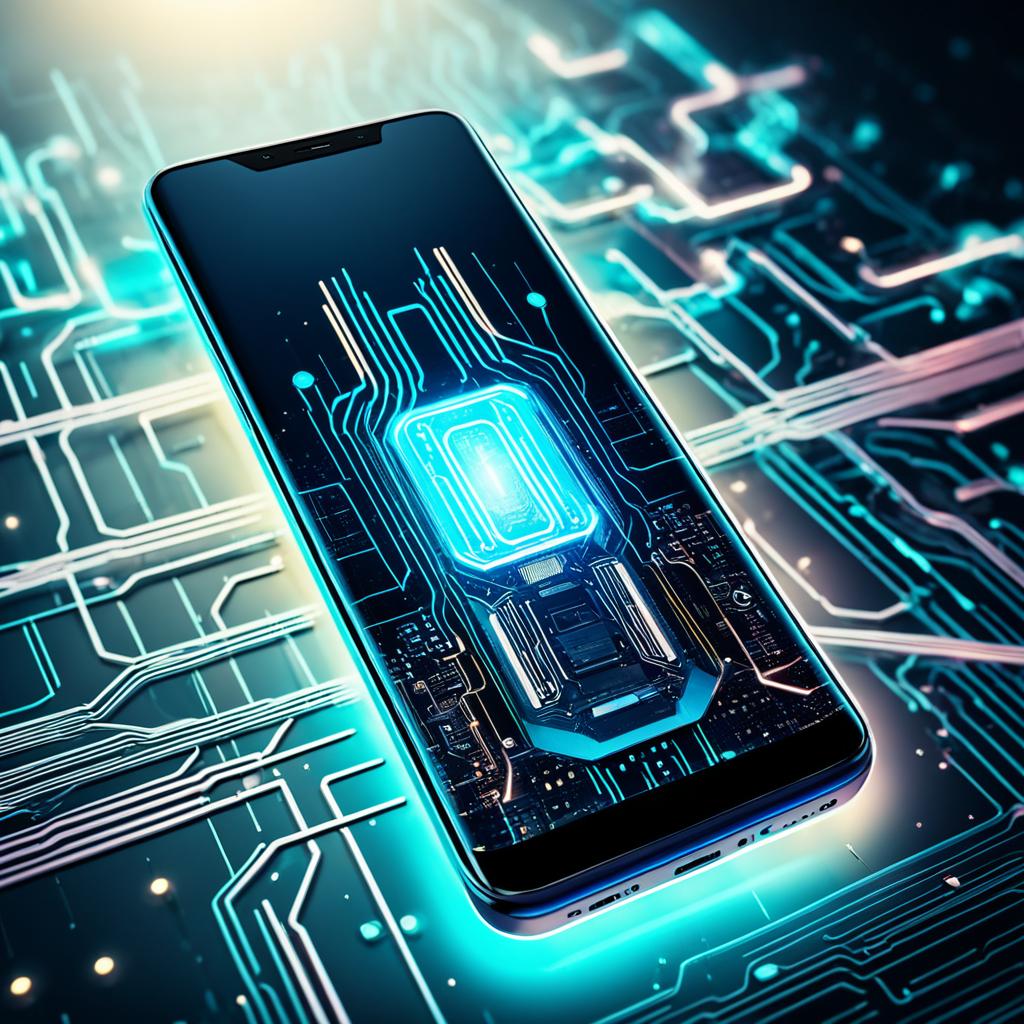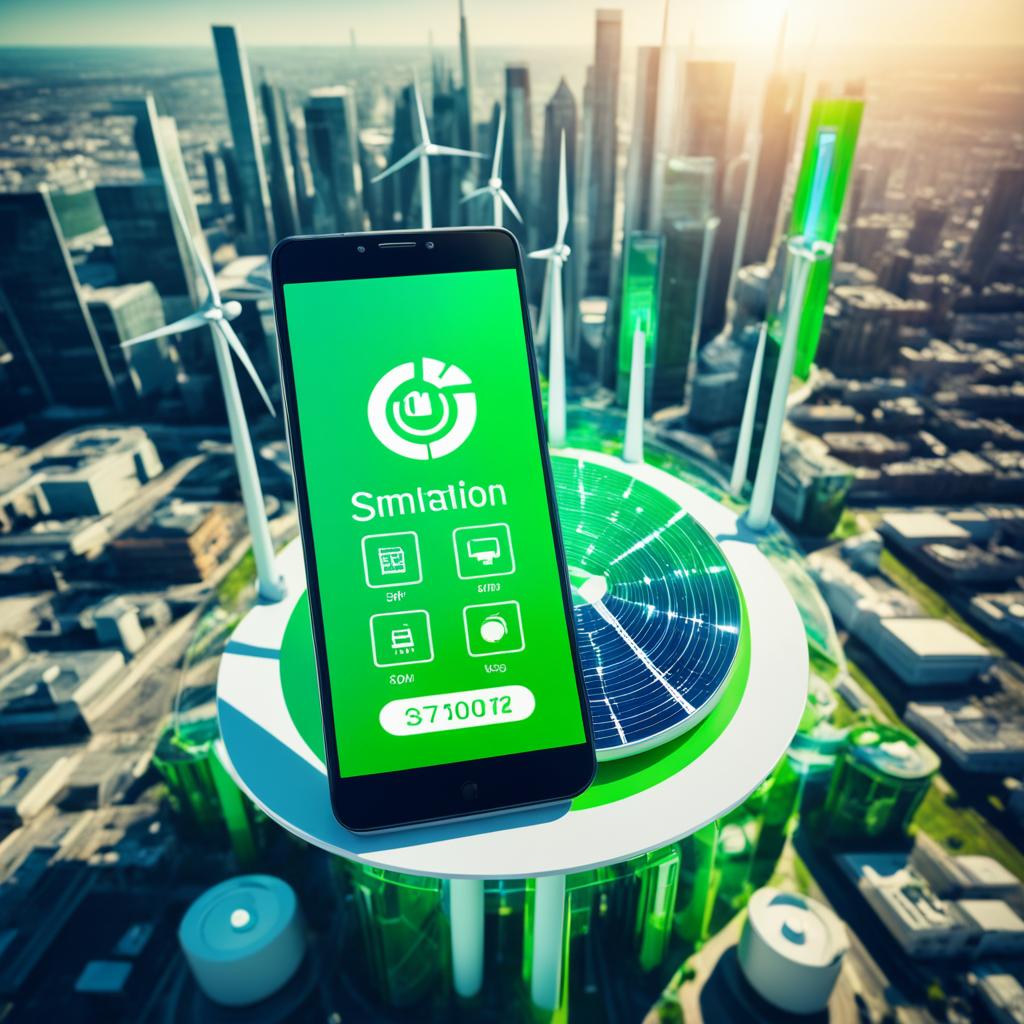Advertisements
You've probably been there: you're waiting for an important call, you need to send an urgent message, or you're in the middle of an exciting game on your smartphone and suddenly the battery runs out. It's frustrating, isn't it? Battery life is a critical factor that influences our choice of devices.
The good news is that the innovations in smartphone batteries are bringing significant advances, defining the future of mobility and connectivity. Lithium-ion and lithium-polymer battery technologies have offered greater energy density and fewer degradation issues compared to previous technologies. However, there are still challenges to be overcome, such as degradation over time and charging time.
Advertisements
The search for new technologies and materials is driving battery innovations long-lasting. Companies are investing in advanced battery chemistry, fast charging and integration of renewable energy. These innovations are transforming the way we use our mobile devices and making our lives more convenient.
And what about the future? Research continues at an accelerated pace to develop innovative materials, manufacturing processes and technologies that further improve the performance of smartphone batteries. O future of smartphone batteries is exciting, promising continued advances that will shape technology energy storage.
Advertisements
Main points:
- Innovations in smartphone batteries are driving mobility and connectivity
- Lithium-ion and lithium-polymer batteries offer higher energy density
- The search for new technologies is driving the creation of long lasting batteries
- O future of smartphone batteries promises continued advances in technology energy storage
- Sustainability is a growing concern in the battery industry
What are High Life Batteries?
To the long lasting batteries are those that have a high capacity for energy storage, wear resistance during frequent charging and discharging cycles, and efficiency in different temperature conditions. They are designed to last a full day of intense use and maintain acceptable performance over several years. These batteries are optimized to resist degradation through advances in battery chemistry and improvements to internal design.
Some innovative technologies powering these batteries are advanced lithium-ion, lithium-ion polymers, solid-state technology, and nanotechnology.
Advances in these technologies allow long lasting batteries offer greater battery longevity, efficiency at different temperatures and greater wear resistance. The materials used and the internal design of the battery are carefully selected and optimized to ensure consistent performance over time.
See too:
Benefits of Long Life Batteries
Long-lasting batteries provide a number of benefits for smartphone users. Some of these benefits include:
- Greater battery life, allowing prolonged use of the device without the need for constant recharging;
- Less need for battery replacement over time, reducing costs and environmental impact;
- Consistent performance even with intense use and frequent charging and discharging;
- Resistance to temperature variations, enabling efficient operation in different environments;
- Compatibility with advanced smartphone features such as high-resolution camera, demanding games and applications.
These benefits make long-lasting batteries essential to the user experience and productivity of everyday smartphone use.
| Benefits of Long Life Batteries | |
|---|---|
| Greater battery life | |
| Reduced need for battery replacement over time | |
| Consistent performance even with heavy use and frequent charging and discharging | |
| Resistance to temperature variations | |
| Compatibility with advanced smartphone features |
“High-life batteries represent a significant evolution in smartphone technology. They offer greater autonomy, consistent performance and wear resistance, which considerably improves the user experience.” - Expert Battery Technology
Innovations in Smartphone Batteries
To the innovations in smartphone batteries are transforming the way we use our mobile devices. Advances in battery chemistry, such as the use of solid electrolytes and high-capacity cathodes, are improving battery performance and lifespan. Furthermore, software optimization and fast charging are increasing battery efficiency. New technologies such as wireless charging and solar energy integration are also being explored. Sustainability is a growing concern, with companies seeking more sustainable materials and more environmentally friendly manufacturing processes.

Advances in Battery Chemistry
Advances in battery chemistry are driving the evolution of smartphone batteries. The use of solid electrolytes to replace conventional liquids increases the safety and improves the efficiency of batteries. This technology reduces the risk of chemical liquid leaks and provides longer battery life. Furthermore, high-capacity cathodes allow more energy to be stored, increasing the autonomy of smartphones.
Software Optimization and Fast Loading
Software optimization is an effective strategy for maximizing the performance of smartphone batteries. Manufacturers are developing advanced power management algorithms that reduce unnecessary battery consumption. This allows smartphones to use energy more efficiently, extending their lifespan. Furthermore, the fast charging It is a technology that allows the battery to be recharged quickly, offering greater convenience to the user. With just a few minutes of charging, you can get additional hours of use.
New technologies
In addition to advances in battery chemistry and software optimization, other technologies are being explored to further improve smartphone batteries. Wireless charging is a convenient option that eliminates the need for cables and adapters. Solar energy integration is also being developed, allowing smartphones to be recharged using sunlight, a renewable energy source. These innovations provide more autonomy and reduce dependence on traditional energy sources.
"To the battery innovations of smartphones are enabling a more efficient and sustainable experience for users. The search for more sustainable materials and environmentally friendly manufacturing processes is fundamental to ensuring a better future for future generations.” - Expert Renewable energy
| Current scenario | Desired Future |
|---|---|
| Limited battery life | Long-life batteries |
| Slow and time-consuming loading | Fast and efficient charging |
| Dependence on non-renewable energy sources | Renewable energy integration |
The search for battery innovations of smartphones aims to overcome the limitations of the current scenario, bringing more efficient and sustainable solutions to users. With the constant evolution of technology, we can expect increasingly advanced batteries, capable of meeting the demands of intensive use and at the same time contributing to the preservation of the environment.
The Future of Smartphone Batteries
O future of smartphone batteries It's quite promising. Research is being carried out to develop innovative materials and manufacturing processes that will further improve battery performance. Technologies such as high energy density batteries, fast charging, solid state batteries and software optimization are driving the evolution of smartphone batteries. Solar energy integration and battery recycling are also emerging trends. These innovations have the potential to make our mobile devices more efficient, autonomous and sustainable.
High energy density battery technologies are being developed to provide greater energy storage capacity in a compact size. This will allow smartphones to last longer on a single charge, providing greater convenience to users. Additionally, fast charging is becoming a reality, allowing devices to charge in minutes rather than hours. This revolutionary technology is being driven by advances in battery chemistry and device design.
Another important innovation is the development of solid-state batteries. These batteries will replace conventional lithium-ion batteries, offering greater energy density, extended lifespan and greater safety. Additionally, software optimization is being improved to improve energy efficiency of smartphones, ensuring that only the necessary features are executed, saving energy and extending battery life.
Solar energy integration is another promising area of research. Smartphones of the future could be equipped with built-in solar panels, allowing them to charge from sunlight, reducing the need for external charging and taking advantage of renewable energy sources. Additionally, battery recycling is becoming increasingly important, helping to reduce the environmental impact of discarded batteries.
In short, the future of smartphone batteries is full of exciting promise and technological advancements. Through continuous research and innovation, we can expect more efficient mobile devices, with high-capacity batteries, fast charging and greater sustainability. With these improvements, smartphones will become even more crucial in our lives, driving future technologies such as electric vehicles and energy storage solutions.

| Battery Technology | Benefits |
|---|---|
| High energy density batteries | Greater energy storage capacity in a compact size |
| Fast charging | Fast charging in minutes instead of hours |
| Solid State Batteries | Higher energy density, longer service life and greater safety |
| Software optimization | Improvement in energy efficiency, extending battery life |
| Solar energy integration | Charging from renewable energy sources |
| Battery recycling | Reducing the environmental impact of discarded batteries |
Conclusion
The innovations in smartphone batteries have a significant impact on our user experience and the environment. Long-lasting batteries offer greater reliability and convenience while reducing battery anxiety. Additionally, they better support advanced features and contribute to sustainability while helping to reduce battery disposal.
While these innovations provide notable benefits, there are significant challenges to be addressed. O implementation cost of these technologies and the need for adequate recycling infrastructure are essential factors to be considered.
The ever-increasing demand for long lasting batteries has directly influenced the smartphone market, with manufacturers focusing on developing more powerful batteries efficient and long-lasting. The future of smartphone batteries promises to be exciting, with predictions for continued advancements that will shape the energy storage technology and will drive innovations in this field.
FAQ
What are long life batteries?
Long-lasting batteries are those that have high energy storage capacity, resistance to wear during frequent charge and discharge cycles, and efficiency in different temperature conditions. They are designed to last a full day of intense use and maintain acceptable performance over several years.
What are the innovations in smartphone batteries?
Innovations in smartphone batteries include advances in battery chemistry such as the use of solid electrolytes and high-capacity cathodes, improvements in internal design, software optimization and technologies such as fast charging, wireless charging and solar power integration. These innovations aim to improve battery performance, lifespan and sustainability.
What is the future of smartphone batteries?
The future of smartphone batteries is promising, with research underway to develop innovative materials and manufacturing processes that further improve battery performance. Technologies such as high energy density batteries, fast charging, solid state batteries and software optimization are driving the evolution of smartphone batteries. Solar energy integration and battery recycling are also emerging trends, making our mobile devices more efficient, autonomous and sustainable.
How do innovations in smartphone batteries impact our user experience and the environment?
Innovations in smartphone batteries offer greater reliability and convenience, reducing battery life anxiety. Additionally, they support advanced features and help reduce battery disposal, contributing to sustainability. However, there are challenges to be faced, such as the cost of implementation and the need for adequate recycling infrastructure. The demand for long-lasting batteries is influencing the smartphone market, with manufacturers focusing on developing more efficient and longer-lasting batteries.
